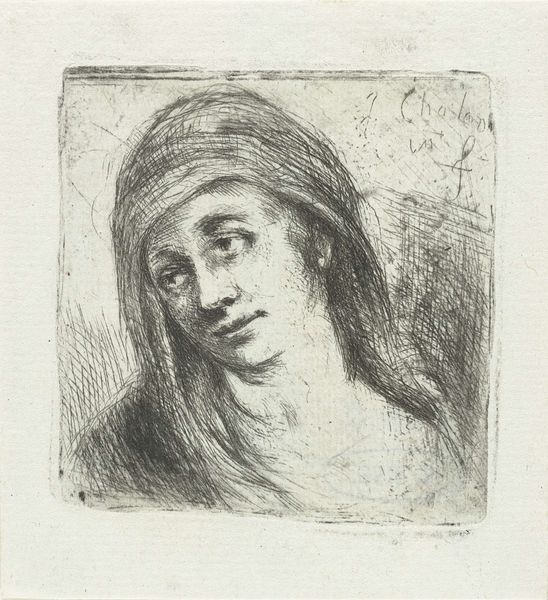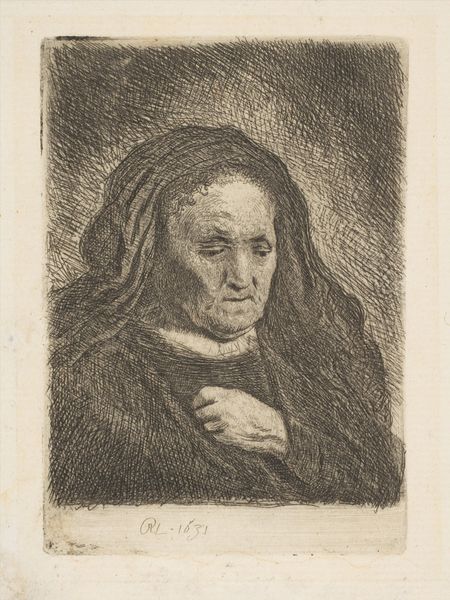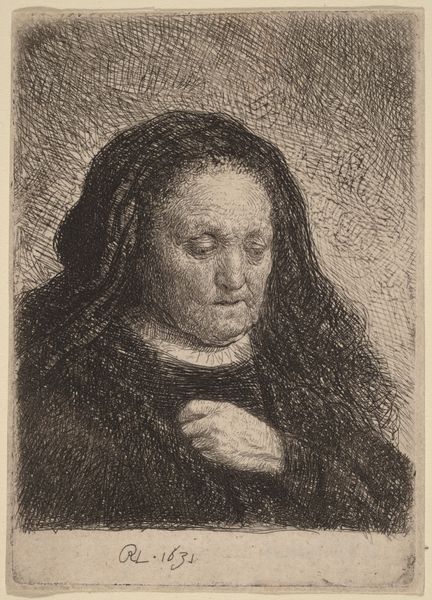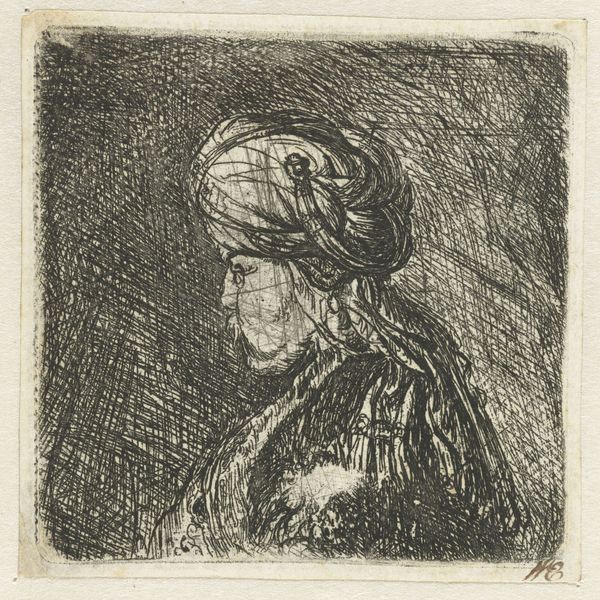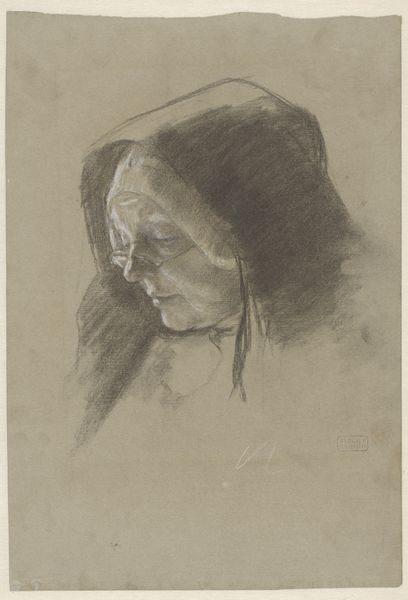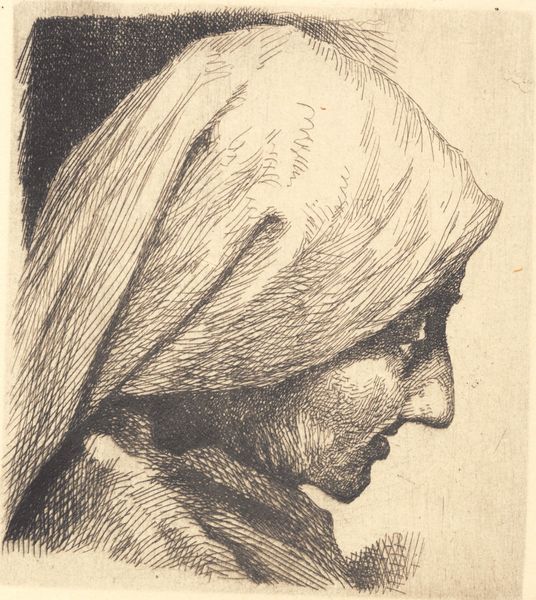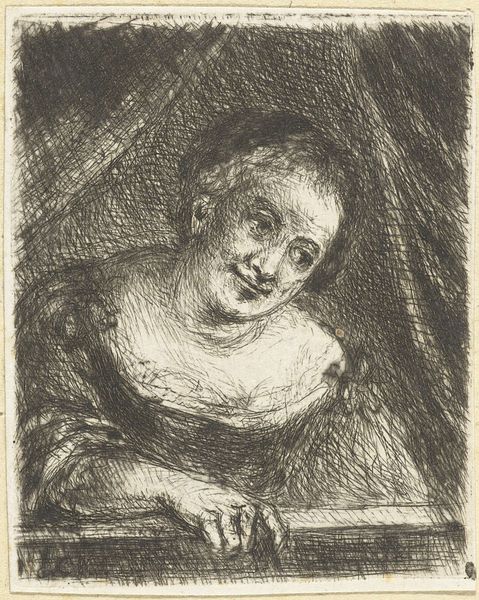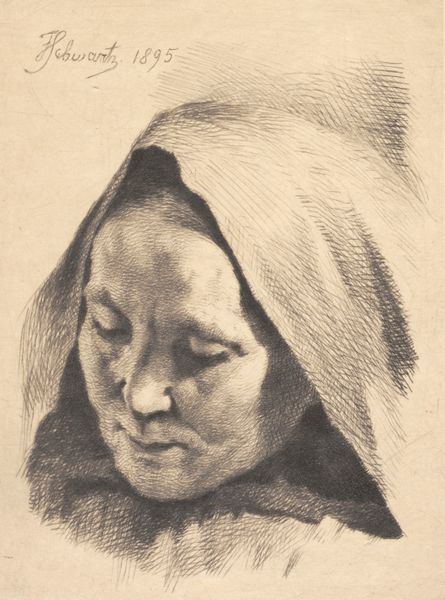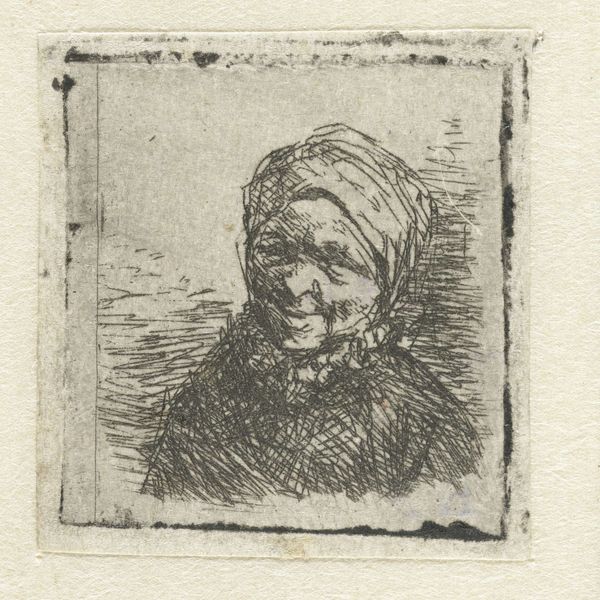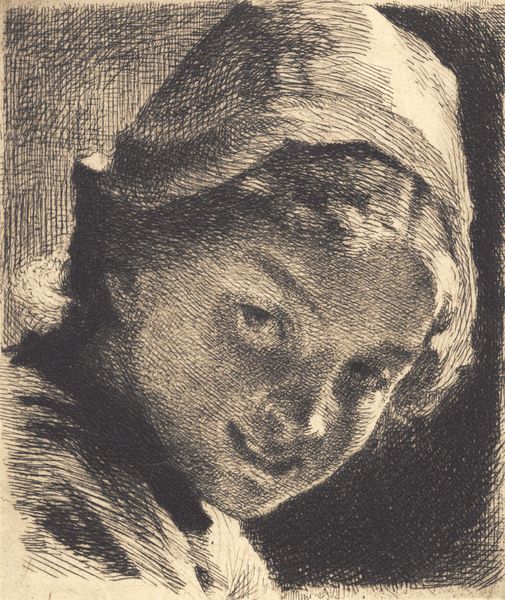
drawing, print, etching, engraving
#
portrait
#
drawing
# print
#
etching
#
engraving
#
realism
Dimensions: height 102 mm, width 97 mm
Copyright: Rijks Museum: Open Domain
Curator: What a striking portrait! We’re looking at an etching and engraving by Jan Chalon, titled "Ooude vrouw met zwarte sluier," or "Old Woman with Black Veil," likely created between 1748 and 1795. Editor: It certainly is… stark. The heavy use of lines to define form creates a rather somber, almost mournful mood. Her downcast eyes and pursed lips... she carries a certain weight, doesn't she? Curator: Absolutely. These kinds of portraits, particularly of older individuals, often served a didactic function. They were moralizing images, reflecting on the passage of time, the virtues of piety, or perhaps the societal roles assigned to women of a certain age. The "black veil" itself carries symbolic weight, hinting at widowhood or a life dedicated to faith. Editor: Function aside, look at the technique! Chalon's mastery of line weight and cross-hatching is what gives the piece its power. Notice how the density of the lines around her face emphasize the wrinkles and texture of her skin, contrasting with the softer treatment of the veil. It is creating dramatic chiaroscuro effects. Curator: And, of course, this piece was likely part of a larger printmaking culture. It might have circulated among a particular social class or been used for educational purposes. Prints allowed for wider dissemination of images, influencing ideas and beliefs. The choice of an elderly woman as a subject… was that an expression of respect, or something else? It prompts us to consider the image within a particular cultural context. Editor: Hmm, interesting perspective. For me, beyond its social implications, it’s the formal arrangement that captivates. The framing of her face, the strategic deployment of shadow… everything serves to focus the viewer on her internal world, regardless of whatever message society at the time was trying to send. Curator: Indeed, we are both bringing our perspectives to bear on a relatively small but fascinating piece, and by appreciating both the social function and formal technique, hopefully listeners gain new insights. Editor: Right you are, seeing both the historical context and aesthetic elements can really enrich how we understand a piece like this.
Comments
No comments
Be the first to comment and join the conversation on the ultimate creative platform.
